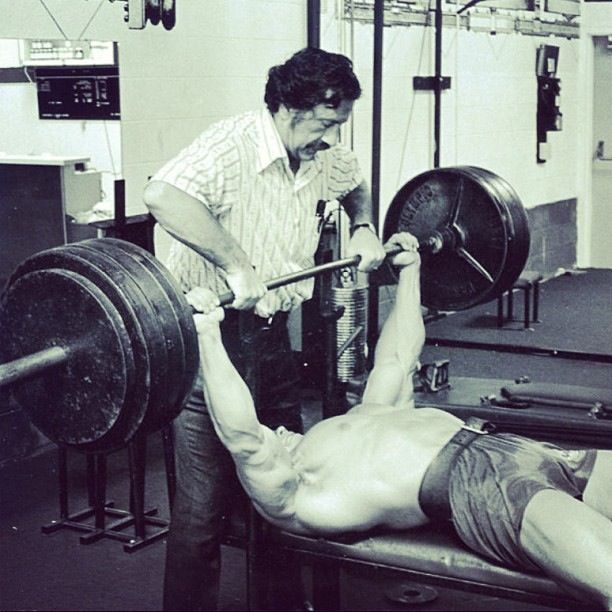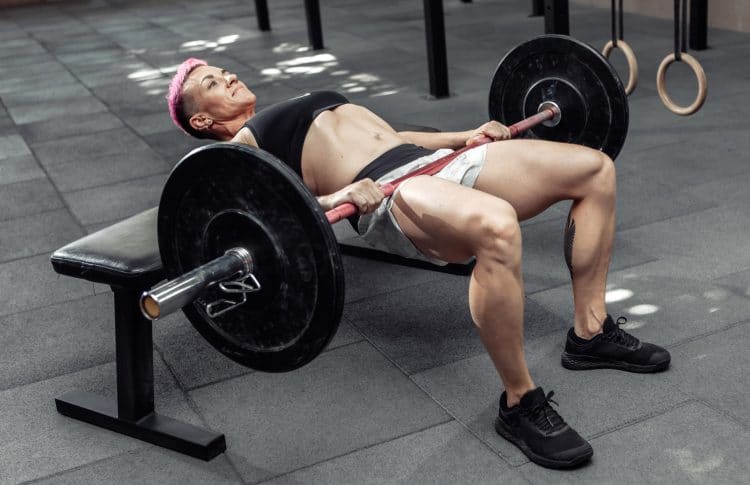In fitness and strength training, we have a saying: “If you always do what you have always done, you’ll always get what you always got.”
While that might sound like a cross between a tongue twister and a philosophical statement, it explains very well how a program that once delivered great results usually stops workout after a few weeks or a month or two.
You see, your body is the master adapter. When exposed to stress, it makes physiological changes so that, when it faces that same stress again, it’s better prepared to cope. This is the very essence of strength training.
When you start a new workout, it comes as a shock to your body, so it pulls out all the stops and adapts. As a result, your muscles get bigger and stronger, and you recover quickly from the workout.
But, the more often you do that same workout, the smaller the stimulus is for change. Eventually, your body won’t view your workout as a threat, and your progress will grind to a halt.
That’s why the best workouts are designed to be progressive, meaning they become more challenging as time passes. Weight increases, doing more reps per set, and taking shorter rests between sets can all help maintain your progress.
Level Up Your Fitness: Join our 💪 strong community in Fitness Volt Newsletter. Get daily inspiration, expert-backed workouts, nutrition tips, the latest in strength sports, and the support you need to reach your goals. Subscribe for free!
However, despite these interventions, even the best program will stop working in time, and you’ll find yourself stuck in a training rut.
In most cases, the only way out of a training rut is to adopt a new program. This will shock your body back into growth.
There are hundreds of workouts on Fitness Volt, and here’s another one to add to the list – pre-exhaust for bodybuilding.
What is Pre-Exhaust?
Pre-exhaust is a traditional bodybuilding training method dating back to the 1970s or possibly even earlier. Several people claim to have invented pre-exhaust, including Arthur Jones, the founder of Nautilus, bodybuilding guru Joe Weider, and magazine fitness publisher Robert Kennedy.

The concept of pre-exhaust is pretty simple. When doing a compound exercise, smaller muscles called synergists tend to fatigue before the primary muscle or agonist is fully exhausted.
For example, during bench presses, your triceps may fatigue before your pecs, or, during pull-ups, your biceps may wear out before your lats.
Pre-exhaust aims to tire the agonist so that the smaller synergists are no longer the weak link. This is achieved with supersets.
A superset is where two exercises are performed back to back. With pre-exhaust, the first exercise is an isolation and the second is a compound movement for the SAME muscle group.
Read more about the difference between isolation and compound exercises here.
For example, you could do:
- Pec deck before bench press
- Leg curls before Romanian deadlift
- Leg extensions before leg press
- Lateral raises before overheard press
Additional benefits and effects of pre-exhaust training include:
- Increased time under tension
- Less weight is needed for the secondary exercise
- Improved mind-muscle connection
- Greater workout volume in less time
- Increased workout variety
While scientific studies are inconclusive, pre-exhaust has been around for long enough that it’s safe to say that it works.
In fact, Arthur Jones designed many of the first Nautilus resistance machines for pre-exhaust. He incorporated two machines into one to save moving from station to station. For example, he created a pec fly/chest press, a lateral raise/shoulder press, and even a leg extension/leg press machine.
Pre-exhaust is unusual enough that it could help you bust out of your current training rut. It’s not necessarily better than traditional sets and reps, but that’s not the point. Instead, it’s the variety that makes pre-exhaust so valuable.
So, if your progress has stagnated, switching to pre-exhaust could be just what you need to get things moving again.
Pre-Exhaust Bodybuilding Workout
While you could just add some pre-exhaust supersets to your current workouts, you’ll probably get better results if you follow a more prescriptive training program.
This pre-exhaust workout involves four gym sessions per week, with each major muscle being trained once per seven days. The biceps and triceps are trained twice because, well, who doesn’t want bigger, stronger, more muscular arms?!
Pre-Exhaust Bodybuilding Workout
| Monday | Tuesday | Wednesday | Thursday | Friday | Saturday | Sunday |
| Chest & Biceps | Legs, Calves & Abs | Rest | Back & Triceps | Rest | Shoulders & Abs | Rest |
Before you begin any of these workouts, make sure you spend some time warming up and preparing your muscles and joints for what you are about to do. Start with a few minutes of easy cardio followed by dynamic mobility and flexibility exercises for the muscles you’re about to work. Finish your warm-up with a couple of light sets of the first exercise in your workout.
Remember, pre-exhaust training is a type of supersetting. That means exercises are arranged and are to be performed as pairs, which are designated a) and b) in the charts below.
So, do the first exercise in each pairing and then, resting no more than 10-15 seconds, do the second exercise. Recover for a minute or two, and then repeat the pairing.
Level Up Your Fitness: Join our 💪 strong community in Fitness Volt Newsletter. Get daily inspiration, expert-backed workouts, nutrition tips, the latest in strength sports, and the support you need to reach your goals. Subscribe for free!
Pre-exhaust Workout 1 – Chest & Biceps

| # | Exercise | Sets | Reps | Recovery |
| 1a | Pec deck | 4 | 8-12 | 60-90 seconds |
| 1b | Bench press | |||
| 2a | Cable crossover | 4 | 8-12 | 60-90 seconds |
| 2b | Incline dumbbell press | |||
| 3a | Cable curl | 3 | 8-12 | 60-90 seconds |
| 3b | Supinated chin-up |
Pre-exhaust Workout 2 – Legs, Calves & Abs

| # | Exercise | Sets | Reps | Recovery |
| 1a | Leg extension | 4 | 8-12 | 60-90 seconds |
| 1b | Squat | |||
| 2a | Leg curl | 4 | 8-12 | 60-90 seconds |
| 2b | Romanian deadlift | |||
| 3a | Seated calf raise | 3 | 8-12 | 60-90 seconds |
| 3b | Standing calf raise | |||
| 4a | Cable crunch | 3 | 12-15 | 60-90 seconds |
| 4b | Rollout |
Pre-exhaust Workout 1 – Back & Triceps

| # | Exercise | Sets | Reps | Recovery |
| 1a | Dumbbell pullover | 4 | 8-12 | 60-90 seconds |
| 1b | Pull-up | |||
| 2a | Straight arm pulldown | 4 | 8-12 | 60-90 seconds |
| 2b | Chest supported row | |||
| 3a | Triceps pushdown | 3 | 8-12 | 60-90 seconds |
| 3b | Triceps dip |
Pre-exhaust Workout 1 – Shoulders & Arms

| # | Exercise | Sets | Reps | Recovery |
| 1a | Cable lateral raise | 4 | 8-12 | 60-90 seconds |
| 1b | Arnold press | |||
| 2a | Reverse fly | 4 | 8-12 | 60-90 seconds |
| 2b | Face pull | |||
| 3a | Skull crusher | 3 | 8-12 | 60-90 seconds |
| 3b | Close grip bench press | |||
| 4a | Preacher curl | 3 | 8-12 | 60-90 seconds |
| 4b | Barbell curl |
Pre-Exhaust Workout FAQs
Got a question about this pre-exhaust workout plan? We’ve got the answers!
1. Is this a cutting or bulking workout?
You can use pre-exhaust for cutting or bulking. Your results will depend on your diet. Create a calorie deficit, and you should cut and burn fat. But, if you have a calorie surplus, you should build muscle and bulk up. So, change your diet based on what you want to achieve from your workouts.
2. Can I change the exercises?
Pre-exhaust is a pretty regimented form of strength training. The order and type of exercises are very important. That said, you can make changes, but you must stay true to the spirit of the workout.
For example, you could do push-ups instead of dips or dumbbell flyes instead of the pec deck. However, you cannot replace an isolation exercise with a compound exercise or vice versa, as that would mean you are no longer doing pre-exhaust.
3. Can you build strength with pre-exhaust?
Pre-exhaust is mostly a hypertrophy or muscle-building training system. However, your muscles should get stronger as they get bigger. That said, if you want to increase your strength, you may get better results if you use heavier weights for the compound exercises. But, if building strength is your primary goal, pre-exhaust may not be the best program for you.
4. Do I need to use supplements for this workout?
You don’t need to use any bodybuilding supplements if you don’t want to. In fact, you should be able to get most of the nutrients you need from a balanced diet. That said, there are some supplements that may enhance your progress.
Good choices include:
That’s not to say you need all or any of these supplements, but if you want to make better progress in less time, they could be helpful.
5. Do you have a full-body pre-exhaust workout for me to try?
Yes indeed! Do this workout 2-3 times a week on non-consecutive days, e.g., Monday, Wednesday, Friday, or Monday and Thursday.
Related: Full Body vs. Split Workouts – How to Choose
Full-Body Pre-exhaust Workout

| # | Exercise | Sets | Reps | Recovery |
| 1a | Leg extension | 3 | 8-12 | 60-90 seconds |
| 1b | Alternating lunges | |||
| 2a | Leg curl | 3 | 8-12 | 60-90 seconds |
| 2b | Barbell hip thrust | |||
| 3a | Pec deck | 3 | 8-12 | 60-90 seconds |
| 3b | Incline dumbbell press | |||
| 4a | Straight arm pulldown | 3 | 8-12 | 60-90 seconds |
| 4b | Lat pulldown | |||
| 5a | Dumbbell lateral raise | 3 | 8-12 | 60-90 seconds |
| 5b | Arnold press |
Wait, what? No biceps or triceps exercises?
Remember that your biceps are involved in all upper body pulling exercises, and your triceps play a part in all upper body pushing exercises, so you are training them, albeit indirectly.
With all the extra isolation exercises, most people won’t have time or energy to work their arms, too. If you must train your biceps and triceps, just do a couple of sets for each at the end of your workout.
Workout for Fast Gains – Wrapping Up
Training ruts and plateaus are very frustrating. Hitting the gym is hard enough without not getting any meaningful results.
In some cases, progress stagnation is caused by lack of sleep, an improper diet, or not getting enough rest between workouts. However, if you’ve been following the same plan for more than a couple of months, your body could simply be bored with your current training plan.
Imagine eating the same meal every day. Even if it was once your favorite, eventually, you’ll get fed up with the same old foods and start craving something new.
The same thing happens if you do the same workout for too long; your body will become accustomed to it and won’t have a good reason to adapt and grow.
Pre-exhaust is just one way to breathe new life into your workouts. Use this training program to get out of your current rut and back to some productive training.








